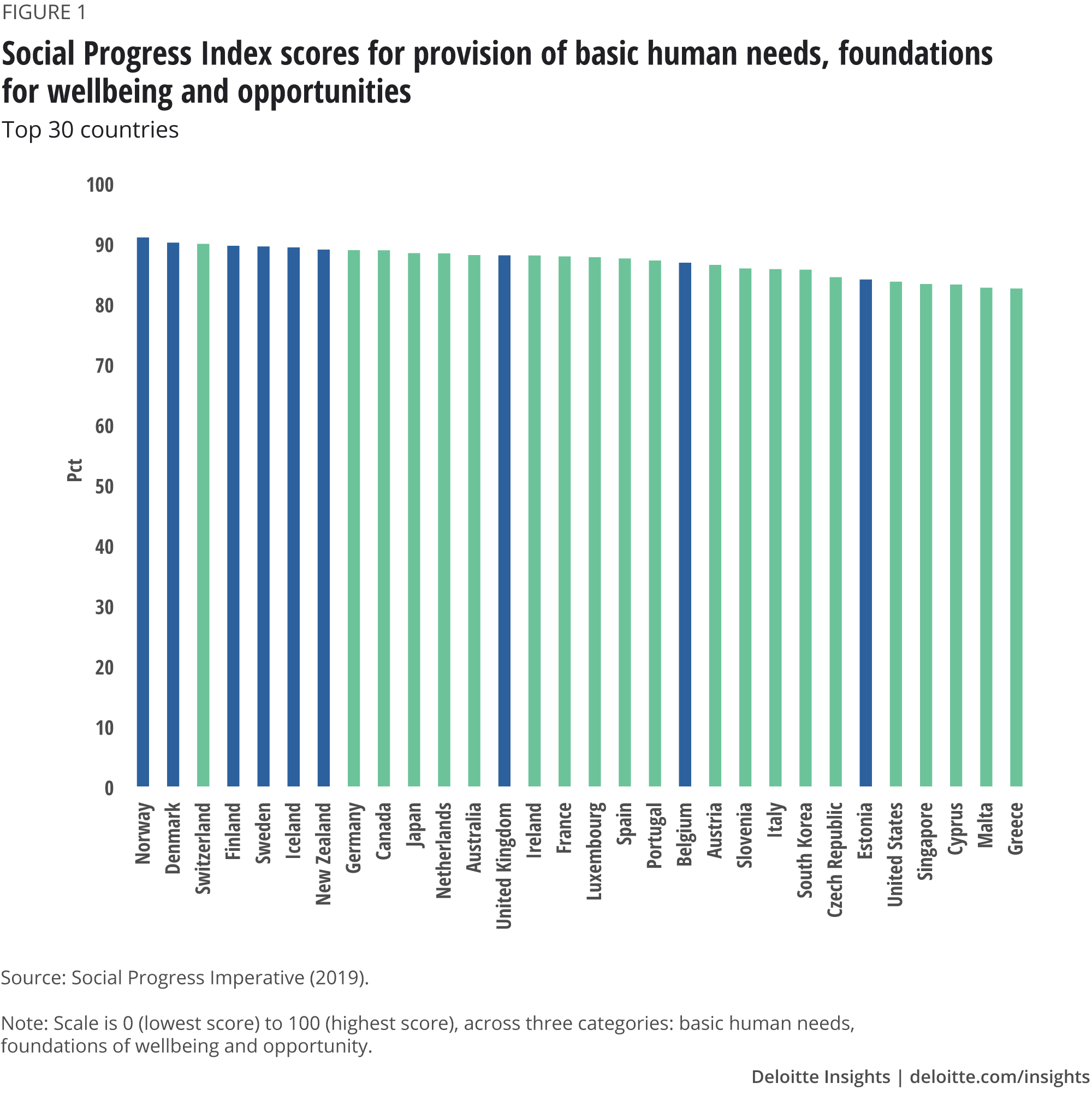
The Nordic social welfare model Lessons for reform
5 minute read
20 April 2020
The Nordic nations offer high levels of social support, however at the cost of high taxes. As Western societies grapple with challenges ranging from technology to climate change, immigration and globalisation, examining the Nordic model of social welfare may help.
The Nordic social welfare model is both envied and scrutinised. Fans point out the model’s substantial citizen support; its productive investment in health, education and job training; and its work incentives and requirements. Critics argue that the taxes required to fund the large public sector are excessively high. But for better or worse, these elements somehow find balance in a combination that’s lasted for decades, featuring a strong economy and tax funded services and a social “safety net” that enjoys broad support.
Learn More
Discover the Government & Public Services collection
Download the infographics
Learn about Deloitte’s services
Go straight to smart. Get the Deloitte Insights app.
Today’s structure wasn’t achieved in stasis; hence, the Nordic economies represent an interesting case of how countries can adapt. Whether due to the severe economic and structural crisis several of the Nordic economies faced in the 1970s through to the 1990s, or other shifts, the Nordic countries have repeatedly reconsidered their approaches and enacted reforms when a policy is no longer viable. Their current challenges may be the toughest yet and are familiar to governments the world over – technical innovation, globalisation, aging populations, immigration, off-shoring and climate change top the list.

Deloitte, with some assistance from Danish think tank Kraka, put the Nordic model under the microscope to see how it has developed and adapted, hoping to identify aspects that can be applied to other nations. The resulting report covers the pros and cons, past and evolving reforms, and a handful of challenges that are critical to the Nordic model right now:
1. Securing contribution from the whole population: Ageing populations and an increasing number of groups on the edge of the labour market require new initiatives to maintain high employment rates, testing the Nordic model’s ability to secure full contribution.
2. Providing the necessary competencies: Free education has allowed most of the population to uphold high minimum wages, but new technologies, immigration and international division of labour have altered the demand for certain skills, affecting particular groups.
3. Strengthening response to climate change: The Nordic countries have presented some of the most ambitious climate and CO2 emission reduction goals in the world. Now they need to devise policies if they want to meet the targets they have set.
4. Dealing with the productivity problem of the public sector: As the relative price of public services rises, and there is reluctance to increase taxes or cut services, boosting productivity through digitisation and automation may be key.
5. Increasing innovation in government: Complex problems, rapid changes in technology and new business models have accelerated the need to reform the inner workings of government and allow new forms of decision making and regulation.
Although the Nordic region presents idiosyncrasies that offer it an arguably unique position, government departments and agencies that are facing similar situations may find the seeds of solutions in the Nordic model. And if they take away nothing else,the key lesson is that it’s imperative to be adaptable; without a willingness to accommodate unforeseen disruptors and address structural changes, a welfare model is unlikely to garner the ongoing support from its citizens.
To better understand how the Nordic region aims for balance in the face of disruption, download Deloitte’s full report, “The Nordic social welfare model: Lessons for reform”.
More on The Future of Public Sector
-
Perspectives on Europe Article5 years ago
-
Marine plastic pollution Article5 years ago
-
A new mindset for public sector leadership Article5 years ago
-
Medicaid in 2040 Article5 years ago
-
The digital citizen Article5 years ago
-
Developing innovation portfolios for the public sector Article6 years ago
















